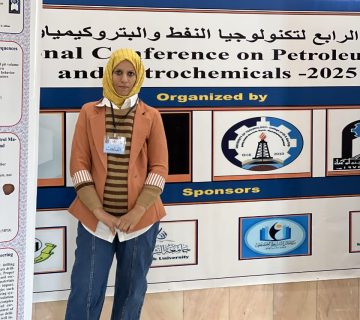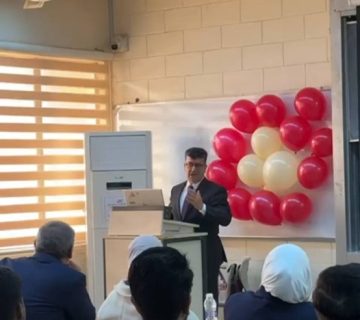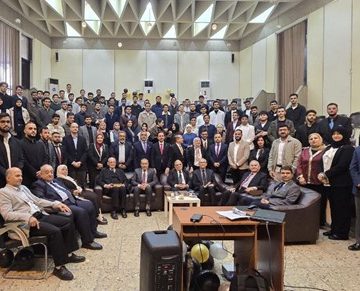Environmental Engineering Department at the College of Engineering, University of Baghdad, held MSc thesis examination titled:“Removal of phenol from Aqueous Solution using Emulsion Liquid Membrane“By the student Tamara Luay Rasool and supervised by Prof. Dr. Ahmed Abd Mohammed. The examination committee consisted of Prof. Dr. Alaa Kareem Mohammed as Chairman, and the membership of Prof. Dr. Naseer Abood Issa and Dr. Mohammed Bahjet Abdulkareem. After conducting the public discussion and listening to the student’s defense, the thesis was accepted. It was summarized as follows: Phenol is a toxic substance which is normally present in wastewater generated from refineries, pharmaceutical and petrochemical operations and even in small quantities, it is toxic to living organisms. Emulsion liquid membranes (ELM) has great potential for the removal of phenol from wastewater. For ELM, The emulsion phase consists of kerosene as a diluent, span80 as a surfactant and NaOH solution as internal phase. While for Pickering emulsion liquid membrane (PELM), use the nano- Fe₃O₄ particles as a stabilizing. The effect of operating parameters onto emulsion stability, extraction efficiency and stripping efficiency were examined, including homogenizer speed (3000-12700 rpm), emulsification time (3-7min), NaOH concentration (0.01-0.2M), internal to membrane phase volume ratio (1:3-3:1),temperature of feed (25-40), surfactant (2-8% v/v) or nanoparticles (0.1-0.6% w/v) concentration, external phase pH (4.5-8.5), external to emulsion volume ratio (250:10-250:100) and stirring speed (200-350 rpm).Under the optimum conditions, the highest extraction and stripping efficiency were 92% and 87% for ELM, while for PELM they were 96% and 92%, respectively; with lowest membrane breakage of 0.921% in ELM and 0.745% in PELM system . Kinetic analysis shows that the phenol extraction by ELM and PELM follows first-order reaction. In addition, thermodynamic analysis reveals that the extraction process was an exothermic, and spontaneous in nature The results proved that, Pickering emulsion liquid membrane (PELM) is more efficient in the extraction efficiency than traditional Emulsion liquid membrane (ELM). The external mass transfer coefficient is increased by 1.201% by adding nanoparticles to the ELM system and overall mass transfer coefficient was 9.038 m/s for ELM, while in PELM was 1.115m/s.Membrane materials and nanoparticles were recycled four times in the extraction of phenol with approximately the same efficiency and no significant breakage percent
Related Posts

Faculty Member from the College of Engineering – University of Baghdad Participates in an International Conference and Presents Research on Eco-Friendly Nanomaterials
AFFORDABLE AND CLEAN ENERGY, constant links, important links, PARTNERSHIPS FOR THE GOALS, Petroleum Engineering, QUALITY EDUCATION, SustainabilityComments are disabled.










